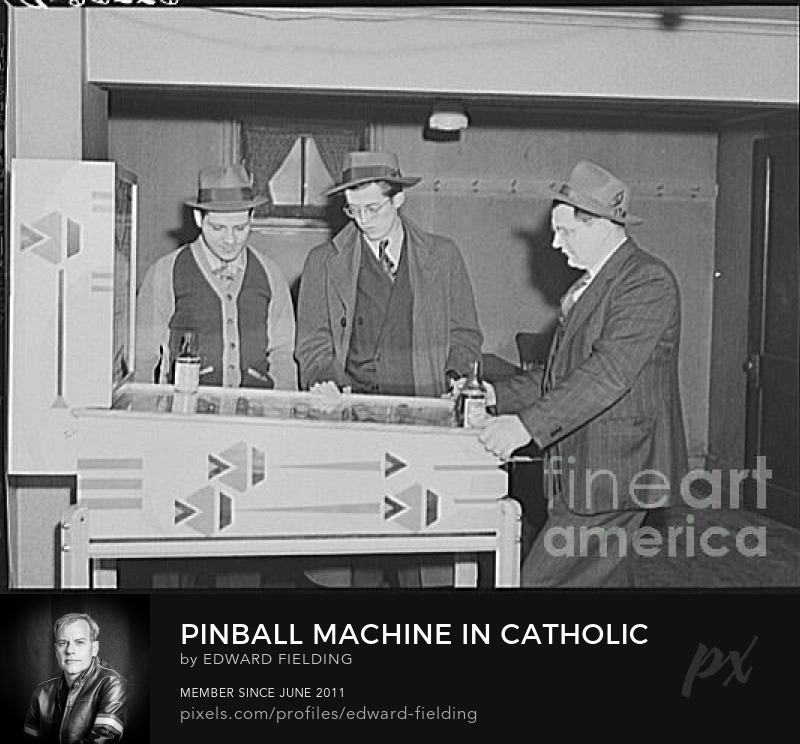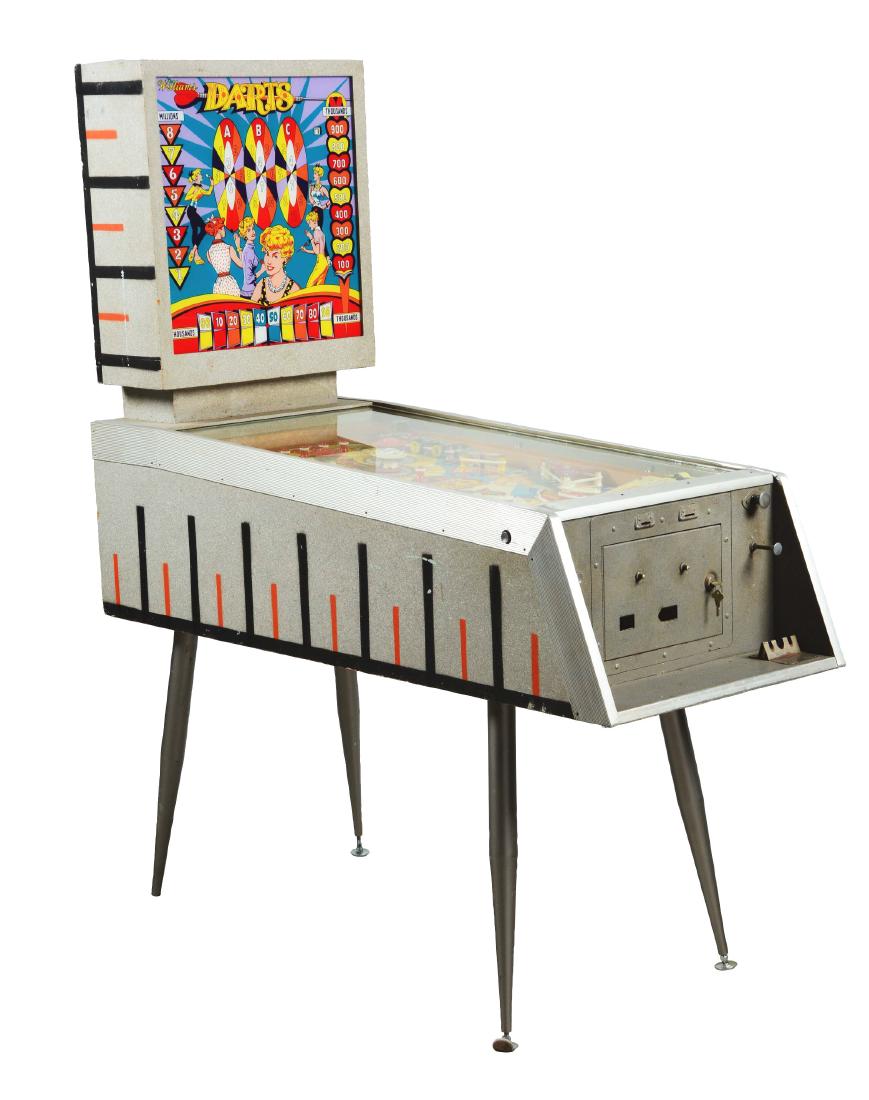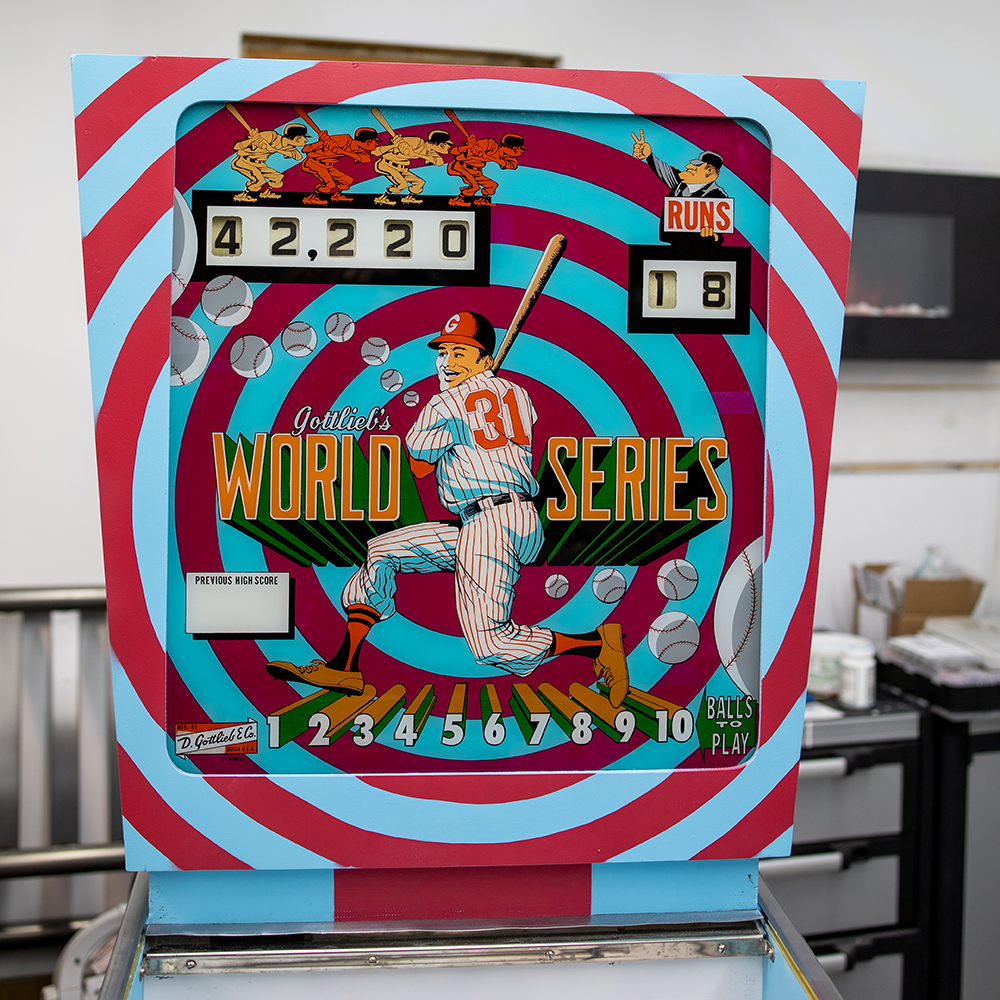“Wedgeheads” are a line of single-player pinball machines from the manufacturer Gottlieb with a distinctive wedge design for the backglass.
The size of the backglass was the same as previous single-player pinball machines but the top flared out. Before the wedgehead design, backboxes were square and the same width as the machine body.

The new flare design made operators space the machines apart more which was more comfortable for players in a row of machines.
According to Gottlieb designer Wayne Nevens, Gottlieb designer of over 180 games, the wedgehead cabinet was cheaper to make. On the front it had a frame cut from a thin piece of plywood rather than a four-piece picture frame. It also gave the game a unique look while maintaining the same glass dimensions.

Chief draftsman Doc Garback is credited with the design. Rumors at the time were that competitor Williams was hiring the famous design firm of Raymond Loewy (Coke Bottle, Streamlined locomotives, Studebaker logo) to redesign their cabinets and this got Gottlieb spooked. They felt the need to come up with something new – this was the start of a new decade after all – the 1960s.


Williams Futuristic Pinball Machine for Austin Powers Go-Go ’60s

William’s bold new look was more like furniture than a commercial amusement device.
The design emphasized coffee table style utility in its drink and cigarette holder shelf and furniture style space-age legs that proved not to hold up to the rigors of enthusiastic nudging. Notice that not much changed in the backbox. On location that shelf would not doubt collect various rubbish like empty soda cups and popcorn cartons.
This new cabinet design only lasted for two years and a few games. Here is the list:
- Darts
- Viking
- Jungle
- Music Man
- Black Jack
- Magic Clock
- Bo Bo
- Caravelle
- Highways
- Hollywood

Gottlieb’s first Wedgehead – 1960s “Flipper”
The simpler, tweak of the square cabinet to the Wedgehead design was much more long-lasting and successful than Williams radical cabinet redesign. As the market leader, Gottlieb was in the position to introduce more subtle changes to pinball design than Willams who took a bold step to try to disrupt the industry with its space-age design.
Gottlieb relied on its venerable staff and their knowledge of the industry rather than an outside design firm that might not quite understand the needs of player and operators. As a result, the line of Gottlieb Wedgeheads stretched into the 70s.

This period also signified the end of the “woodrail” as stainless steel cabinet edges provided a cheaper alternative and this “space age” looking material was impervious to the cigarette butts players were apt to try to extinguish on the machines. Cigarette burns in wood rails were difficult to repair.
Other “advances” of this era that saved the company money and kept the price of the machines down included metal coin doors and three-color cabinets instead of four colors.
The end of the Wedgehead era came in 1979 when the advance of solid-state pinball machines and competition from video games spelled the end of these score reel-based single-player pinball machines.
- The first wedgehead was Flipper (1960)
- The last wedgehead was T.K.O. (1979)

